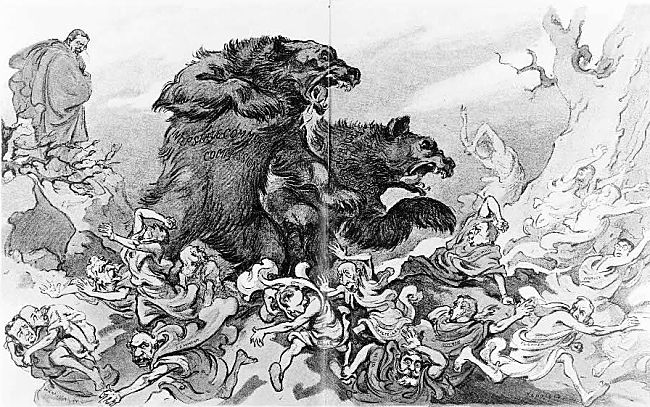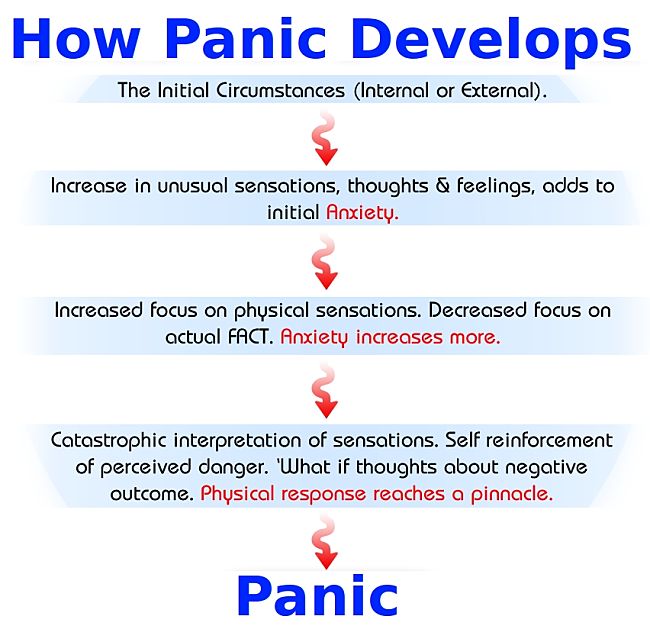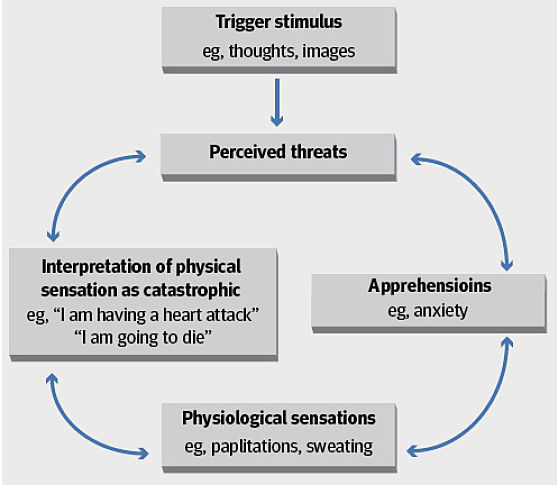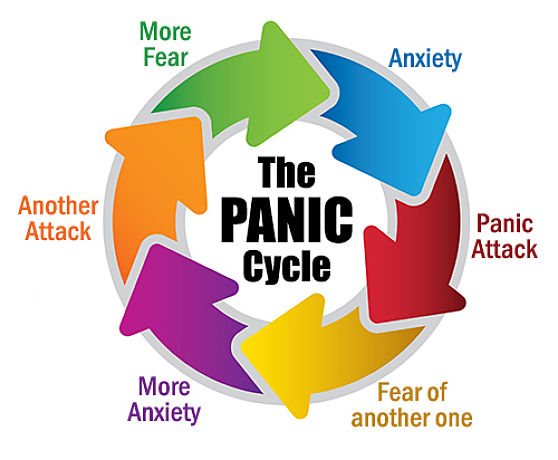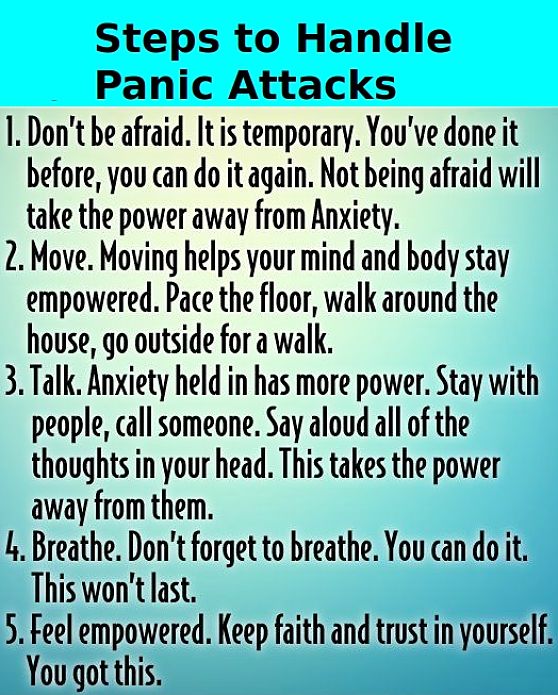Home Remedies Panic Attacks - Symptoms and Treatments for Anxiety
A panic or anxiety attack is a severe bout of fear and concern that occurs suddenly, generally without warning, and often with no apparent cause or reason.
Each year, about 2% of adult Americans (18-54 years of age) experience a panic attack. Almost one in six Americans are likely to experience at least once in their lives.
This article provides an introduction and reviews the information available. If you think you have this condition, or are showing some of the preliminary symptoms I suggest you seek professional help as panic attacks can be very debilitating but can be treated very effectively.
Panic disorder is a more severe condition where panic attacks are repeated. Many people that experience panic disorder also develop some form of agoraphobia. This phobia means that people avoid places or circumstances that have caused previous panic attacks.
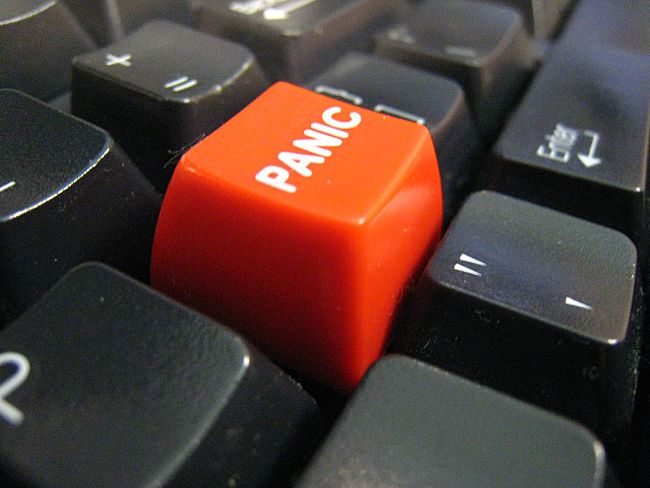
Some people maybe severely affected so that they are afraid to leave their homes, for fear of developing a panic attack in a public place. People may also avoid the non-place circumstances that trigger their panic attacks. This may relate to certain types of food, exercise or to social occasions or situations.
People that develop agoraphobia may have fears of various places and situations. For example people may fear:
- Entering an open place
- Going to shops, joining crowds, and entering public places.
- Traveling in public transport such as buses, trains, or planes.
- Crossing a bridge
- Going into a lift or riding on an escalator.
- Going to a restaurant, shopping centre, cinema, hall or places where there is no easy exit.
- Being far from home - many people with this phobia stay inside their houses most of the time.
- People may develop other irrational fears and phobias. For example, people think that certain foods and exercise cause panic attacks and they develop phobias for these things.
The good news is that various treatments with antidepressants, by themselves or in combination with cognitive and behavioural therapies works well in more than half of the cases.
What is a Panic attack?
People having a panic strike undergo a rapid and unforeseen feeling of overpowering fear. These attacks can happen at any time and in any location and can last from one minute to several hours. Extreme and dominating anxiety may develop in between anxiety attacks, since they appear without warning and are unpredictable. Panic disorder sufferers are constantly concerned about when or if another panic attack could take place.
Facts About Panic Disorder
- Women are two times as probable to be affected than men;
- The most common age is between mid-adulthood and mid-adolescence
- The earlier the onset occurs, the worse the disorder tends to be;
- Persons of aged between 25 and 44 are at greatest risk of evolving panic attacks.
- About 55% of sufferers of panic disorder suffer from depression;
- About 25% of persons with panic disorder will tend to misuse illicit pharmaceuticals or alcohol;
- About 30% of persons with panic disorder will experience social phobia or social anxiety; and
- About 25% of persons with panic disorder will also suffer from Generalised Anxiety Disorder.
Symptoms and Signs of Panic Disorder
- Palpitations;
- Shortness of breath;
- Feeling like there’s a lump in the throat;
- Sweating;
- Choking sensation;
- Nausea;
- Diarrhoea;
- Weakness or trembling;
- Chest pain;
- Abdominal pain;
- Rapid speech;
- Pacing;
- Dizziness;
- Being unable to think clearly;
- An exaggerated startle reaction.
- Anticipatory anxiety – Instead of feeling relaxed you feel tense and anxious waiting for something to happen. You are fearful of future panic attacks.
- Phobic avoidance – You start to avoid certain environments and situations based on a belief you are avoiding the cause of previous panic attacks.
What Are the Triggers?
Understanding the circumstances that preceded the start of the panic attack is the first place to start. Everyone of us can have the "fight or flight" response initiated when we think we are in danger. If they are not obvious you may need to seek help to identify them. Understanding the trigger can help you change your pattern of behaviour or to change you respond to it. The trigger and your response may be an illogical habit. You can change these responses as well as the circumstances to reduce the panic attack.
Coping with a Panic Attack
To ease the effect of a panic attack when it occurs, or to prevent it from getting worse:
- Breathe deeply and as slowly as you can.
- Focus on breathing.
- Breathe into a paper bag. By doing this you breathe in more own carbon dioxide and this can overcome the effects of over-breathing that were triggered by the attack.
How Panic Disorder is Treated
No treatment is required if you only suffer from an occasional panic attack. You can learn to prevent them from occurring or getting worse. It will help to know which triggers the attacks and how to deal with them
Treatment is required if you have panic disorder (recurring attacks). The main aim of the treatment is to reduce the number of panic attacks and their severity. The good news is that panic attacks are highly treatable through a combination of behavioural or cognitive therapy and relaxation techniques, sometimes assisted by medication.
Behavioural treatment normally involves desensitisation, which assists the individual to discover that there is nothing to fear from the symptoms of a fright attack. Behavioural treatment can furthermore assist with any matters of avoidance associated to the fright disorder. Behavioural treatment aspires to change behaviours which are hurtful. This may be especially helpful if you have agoraphobia with fright disorder where you bypass situations or places. The therapist furthermore educates you how to control your fear or disquiet and to face up to the dreaded experiences and places. It often involves breathing techniques.
Cognitive behaviour treatment can assist persons with fright disorder to overwhelm the feelings of anxiety and fear. The cognitive procedure educates them to replace contradictory, unhelpful ideas with more affirmative, realistic and logical thoughts. Cognitive treatment is founded on the concept that certain modes of thinking can initiate, or fuel fright attacks, anxiety and agoraphobia. The therapist assists you to study your present thought patterns and behaviours. Specifically you will be helped by being taught how to recognise any hurtful, unhelpful, and untrue concepts or ideas which you have. For example, your thought processes at the start of an anxiety attack, incorrect beliefs about the personal symptoms, how you respond to the symptoms, fears etc. The objective is to change your modes of thought to bypass or transform these ideas into more positive ones.
I also helps you develop more logical and considered thought patterns that remove the fear. Therapy is generally carried out in several weekly meetings of 45 minutes to an hour.
Antidepressant medicines, which are used to treat depression have been found to be very effective for panic disorder as well. They can prevent panic attacks in about 50% of sufferers. These medicines work by blocking the brain chemicals which are involved in the development of panic attack symptoms. You need to be aware that these medications may appear to make things worse at the start and may not work at the start of the treatment. It can often take several weeks before the drugs become fully effective. You need to give them time to work.
A combination of CBT and antidepressants may work better than either treatment alone.
If you think you have these symptoms please seek professional help and advice.

